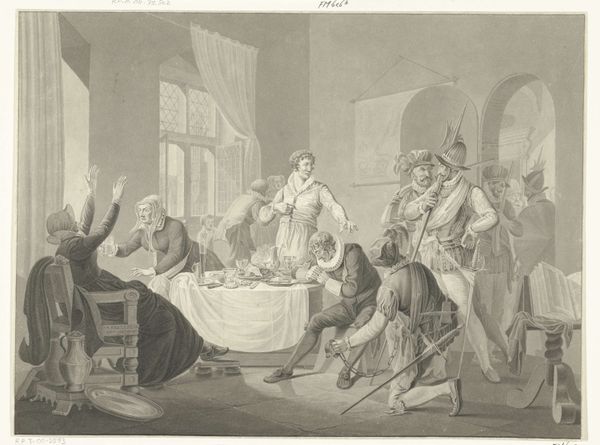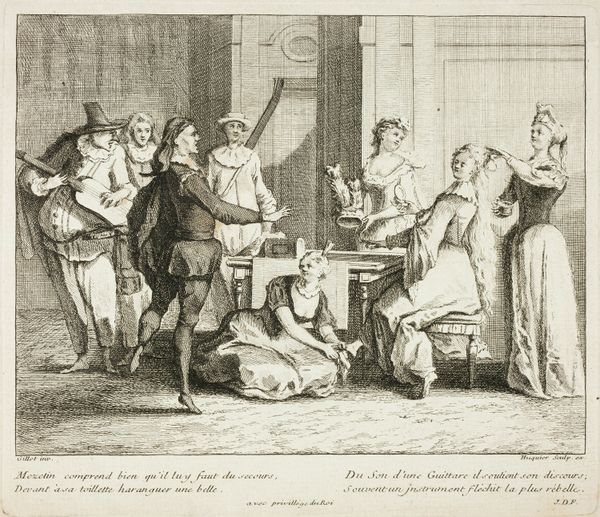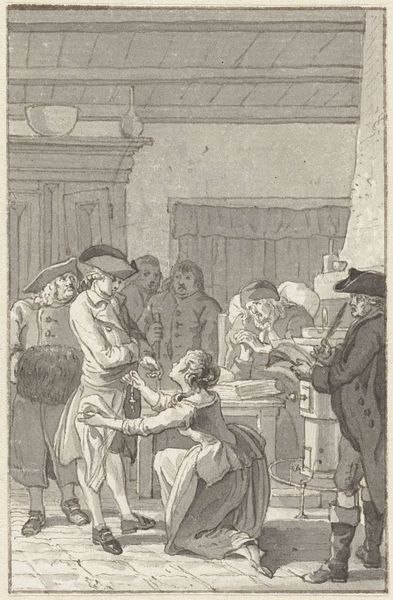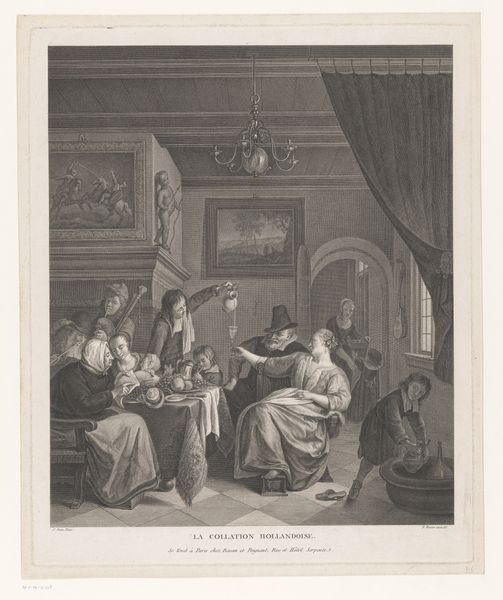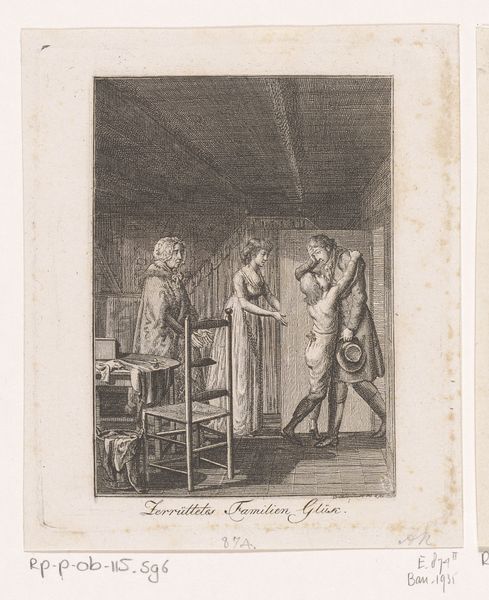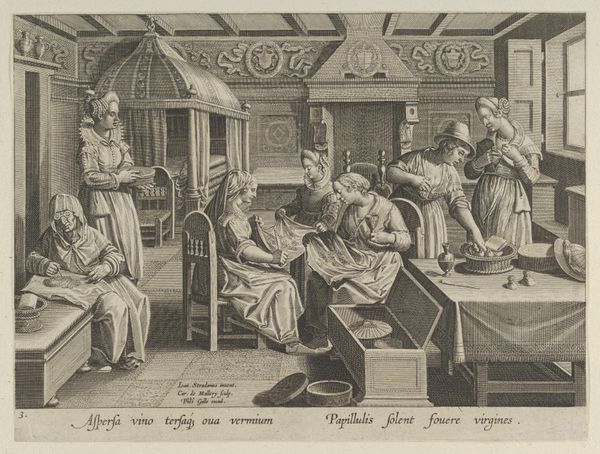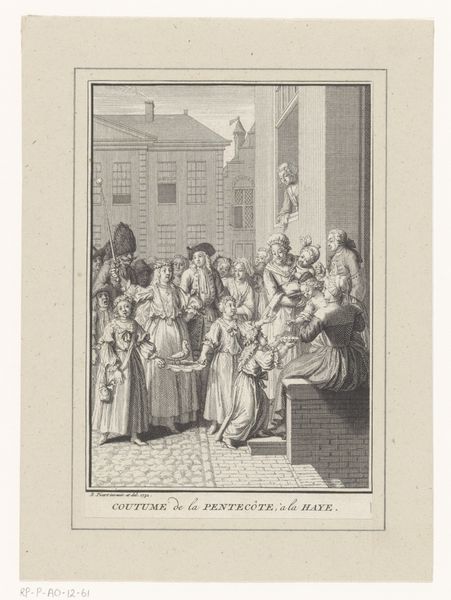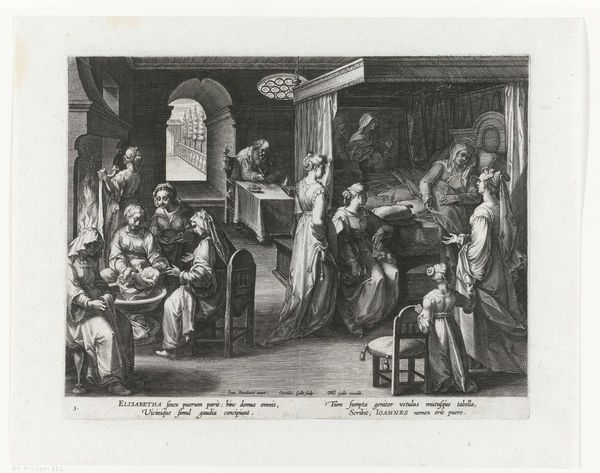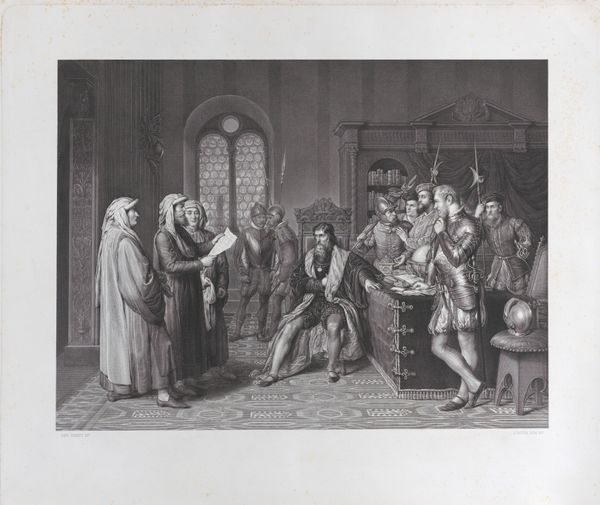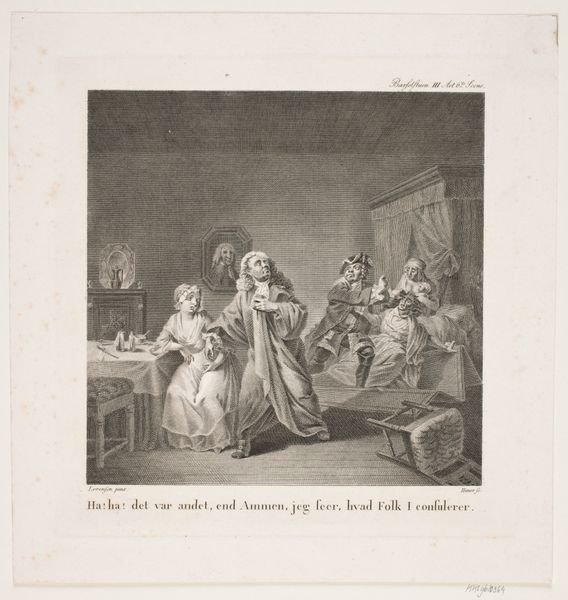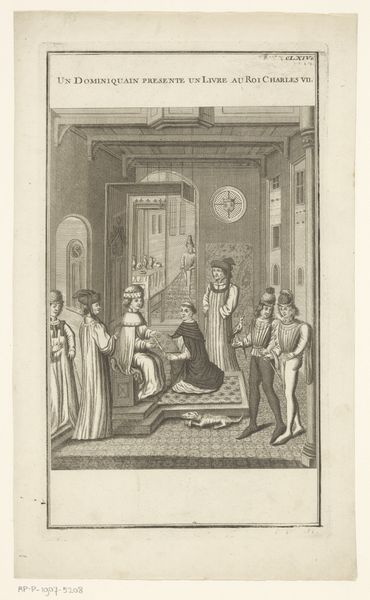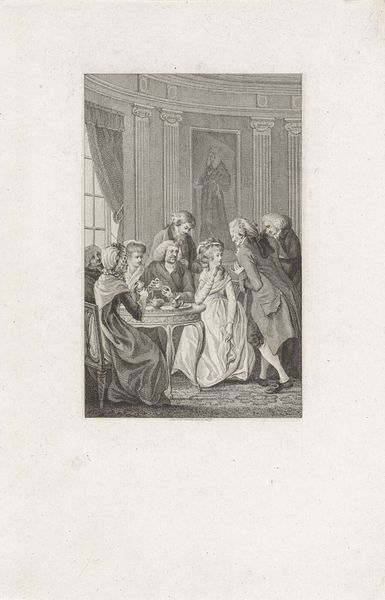
"Broder Cornelii Adrians Absolutions Maade og Tugte=Orden./ J.L. Gottefriidi Chronica. p. 908." 1731 - 1802
0:00
0:00
drawing
#
drawing
#
allegory
#
narrative-art
#
figuration
#
line
#
sketchbook drawing
#
watercolour illustration
#
genre-painting
#
history-painting
#
academic-art
Dimensions: 384 mm (height) x 412 mm (width) (bladmaal)
Curator: Immediately I'm struck by how...grey it is. The muted tones give it this somber, almost ghostly feel. There’s something unsettling, a silent drama playing out. Editor: Yes, unsettling is a good word. We're looking at "Broder Cornelii Adrians Absolutions Maade og Tugte=Orden./ J.L. Gottefriidi Chronica. p. 908.," a drawing created by Johannes Wiedewelt sometime between 1731 and 1802. It depicts a historical or perhaps allegorical scene rendered primarily in line work, with delicate washes. The title itself hints at some ritual of absolution and correction. Curator: Absolution… So all the figures arranged as in an altar picture—are they all seeking forgiveness? Who are they looking to? The hooded figure with the branch? He has that Old Testament prophet vibe. Editor: That figure is certainly central, a point of focus and judgment, perhaps? But look at the layering of visual symbols. There’s a mix of classical and possibly biblical elements. The artist merges styles, a trend that reflected the artist's training in Rome at the time of this art production. The bodies arranged—are some of the women naked or half-naked? Curator: Interesting… The figures' dress styles evoke different time periods. I get the impression it speaks to a continuous cycle—themes of transgression and repentance are timeless. We have a historical moment anchored in memory—that of the early Anabaptist movement that rose up in Northern Germany. The historical reference may or may not be accurate—visualizing a cultural phenomenon may only require hints to allow collective remembering. Editor: The light...there's not much natural light it seems—and where light touches it reveals very little in this historical sketch of an artist working in a period that loved to merge high and low genres to capture its viewers' attentions! The architectural backdrop, almost like a stage set, seems like it is hinting towards a play. The grey palette makes this drawing seem like something remembered. I do like the overall impact: how the viewer has to lean into it to reconstruct the implied drama. Curator: A silent stage for acts of confession and possibly punishment! Yes, it's the kind of art that encourages viewers to bring their own cultural understanding. I like that feeling. Editor: Exactly, that quiet invitation into history or narrative that it creates for us.
Comments
No comments
Be the first to comment and join the conversation on the ultimate creative platform.
